Matrix Numbers in Recordings of Gilbert & Sullivan
By Howard S. Friedman
Table of Contents
- Matrix Numbers in Recordings of Gilbert & Sullivan
- Uses and Applications of Matrix Numbers
- Conclusion
- Bibliography
See Also:
- Matrix and Catalog Numbers in G&S Discography
- Gramophone Company Matrix and Catalog Numbers
- Victor's Use of Matrix Numbers
- Summary of Recording Histories
Matrix Numbers in Recordings of Gilbert & Sullivan
Overview
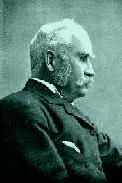
|
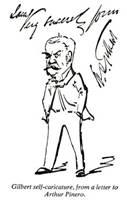 William S. Gilbert |
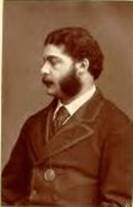
|
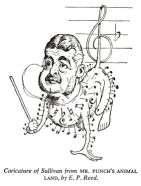 Arthur Sullivan |
Most of the 78rpm recordings of Gilbert & Sullivan works from 1898 through 1936 were made by the Gramophone & Typewriter Company, later His Master's Voice. Since matrix numbers of this company provide the most difficulty in their interpretation, I will focus the discussion on the matrix numbers that one can expect to find on these discs.
The Summary of Recording Histories provides the full list of the complete sets and substantial abridgements that were published on 78rpm records. For detailed analyses of the Berliner, Gramophone & Typewriter, and His Master's Voice recordings of Gilbert and Sullivan, the reader is referred to the individual web pages dedicated to each of these recordings.
For purposes of our discussion here, the G&T (and successor company) recordings can be divided into four groups: those of the 19th Century, the early G&T complete sets, the HMV acoustical sets, and the HMV electrical sets. Separate sections are dedicated to each of these. There are also brief sections on the sets published by other labels and the LP era.
This discography's coverage of the 78rpm era deals mainly, although not solely, with the "complete" sets and substantial abridgements. Francis included in his scope sets consisting of "groups of five or more sides made at essentially the same time and place, and with the same performers." This would, of course, include the four abridged HMV and the four abridged Columbia sets, so "complete" does not seem to be the best adjective. Nevertheless, it is this group of recordings that is primarily the subject here.
There are considerable discrepancies in the details presented in the various sources, and if one does not have access to the records themselves, or to the studio recording sheets or ledgers, it is often difficult to know whom to believe. Before we consider the major series of recordings in detail, it is worthwhile to examine the specific problems that may arise in the treatment of these recordings in the sources, particularly Wolfson and Francis — the two that have the most detailed coverage of early G&S sets.
Wolfson vs. Francis
Some of the details (recording dates, matrix numbers, issue histories) for the early recordings listed in this discography were derived from John W. N. Francis's article, "The Gilbert and Sullivan Operettas on 78s," which appeared in the ARSC Journal, Volume 20, No. 1 (1988-1989). He in turn appears to have derived his information from the archives and recording sheets in EMI and Decca files. Francis states that "The following is taken from the author's discography Operas on 78s, forthcoming in 1990 from Greenwood Press." I have been unable to locate this book anywhere on the Internet or elsewhere, and I have been informed that it was never published. Therefore, the sources that may be listed therein are quite unknown to me.
It would not be amiss to say that the writers of the recording sheets of EMI and Decca may have taken short cuts in setting down the information for each recording session. I refer specifically to the superscript Roman numerals that were used to indicate takes from about 1917 onward. It is doubtful that the data recorders would or could take the time to write these out correctly. Instead, it seems quite likely that they would indicate the take numbers by a hyphen and Arabic number following the basic matrix number.
If this is the case, it explains why Francis's matrix numbers for both the HO and Bb/Cc series indicate takes solely by hyphenated Arabic numeral suffixes. What he saw was what he wrote! Nowhere in his article does Francis ever say that he saw first-hand any of the discographic data that he presented.
John Wolfson, on the other hand, has an extensive personal collection of early Gilbert & Sullivan recordings on 78s, as indicated by the credits given to him by various recording companies, to whom Wolfson not only provided the discs for transcriptions, but also the liner notes.
Francis and Wolfson disagree on many aspects of the recordings, viz., cast members and assignments, matrix numbers, record numbers, recording/issue dates, and so forth. My personal inclination is to accept data from one who is more likely to have observed them directly, in other words, Wolfson. See also the sections below. Unfortunately, there are many sets that Wolfson did not cover in detail.
Francis states that, "From 1907 [sic] to 1950, 29 complete sets of the Gilbert and Sullivan operettas were published on 78s, with at least two versions of each work and five of The Mikado...." In fact, there were closer to thirty-one sets. Although the 1907 G&T Gondoliiers had only 9 sides, and the first 1908 G&T Pinafore only 8 sides, Francis's description of the 1906 G&T Mikado is missing 5 sides, the addition of which would bring it up to 22 sides, hardly in the class of an excerpt or abridgement. Francis omits some 4 sides from the 1907 G&T Yeomen, but even his total of 15 sides hardly qualifies as an abridgement. He also relegates the second 1908 G&T Pinafore, for which he lists 17 sides, to the status of an abridged set. See also the tables below.
It is sometimes difficult to label a particular recording as "complete" or "abridged". Certainly Gilbert was probably never quite satisfied with any of the libretti and was constantly adding, omitting, and revising the operas up until his death. Many "complete" sets since the advent of electrical recording frequently omit second or third verses, not to mention entire selections. Of prime importance is the omission of "Come, Mighty Must" from all but two "complete" recordings of Princess Ida. Nor can one overlook the fact that almost none of the recordings from any period include the dialogue! Nor does this make them any less "complete".
G&S Recordings in the 19th Century
On August 19, 1898, a young man named H. Scott Russell walked into the G&T recording studio in Maiden Lane, and recorded three sides, including "Take A Pair Of Sparkling Eyes" from The Gondoliers. It was issued on Berliner 2006. Unfortunately, the matrix was lost or destroyed, and no copy of the record is known to exist. Russell repeated the recording on January 31, 1899, when it was assigned a matrix number of 1120 and issued as Berliner 2006-X. On November 21, 1900, Russell recorded "A Tenor Can't Do Himself Justice" from Utopia, Limited, and on November 26, 1900, "Would You know The Kind Of Maid," from Princess Ida. These bore matrix numbers 1637a and 1611a and were issued on Berliner 2971 and 2973, respectively.
On October 3, 1898, a young woman named Syria Lamonte came to the Maiden Lane basement studio and recorded "When A Merry Maiden Marries," from The Gondoliers. It was issued as Berliner 3018 and apparently had a matrix number of 12y. It is the earliest known surviving disc of a Gilbert & Sullivan selection, since the earlier Scott Russell disc has been lost.
In an interview with the discographer Brian Rust in 1949, Fred Gaisberg said that he remembered Syria Lamonte (after more than 50 years!), that she was a barmaid, that she had a big voice, and that she was the first "artist" he ever recorded. This was less than 90 days after his arrival in London!
A recording on G&T 4014 of "Prithee, Pretty Maiden" from Patience, sung by a Miss Marwood and a Montague Borwell, was recorded on November 1, 1898. The matrix number appears to be 18y, having been recorded slightly later than the Lamonte disc. They made another, probably on the same date, and issued as G&T 4016, of "Things Are Seldom What They Seem." See the table below.
The Savoy Opera Chorus recorded three known sides, Berliner 3214, 4525 (not listed by Bennett), and 4526, matrix numbers 1850a, 1854a and 1855a. The first was of "Poor Wandering One," with Isabel Jay as the soloist. The other two were "A Heavy Dragoon" and the Act II Finale from Patience, on December 20, 1900. On the previous day, Walter Passmore had recorded two sides, "If You're Anxious For To Shine" from Patience, and "My Name is John Wellington Wells" from The Sorcerer. These bore matrix numbers 1833a and 1831a, respectively, and were issued on Berliner 2454 and 2455. The a suffixes identify the five sides as being recorded by Fred Gaisberg on 7-inch matrices. These are among the less than two dozen nineteenth century G&S recordings, of which 3 are included in Pavilion Records' The Art Of The Savoyard, Volume I, and 7 more in Volume II. Volume I also includes Eleanor Jones-Hudson's recording of "Were I Thy Bride," from the 1907 Yeomen, as well as Amy Augarde's "I'm Called Little Buttercup," from the 1908 Pinafore. The HMV Treasury disc Gilbert & Sullivan: The Early Records includes six more discs from the nineteenth century.
| Matrix Number |
Disc Number |
Selection |
Artist |
Recording Date |
|---|---|---|---|---|
| Berliner 2006 | Take A Pair of Sparkling Eyes | H.Scott Russell | 19 Aug 1898 | |
| 12y | Berliner 3018 | When A Merry Maiden Marries | Syria Lamonte | 3 Oct 1898 |
| 18y | Berliner 4014 | Prithee, pretty maiden | Marwood, Borwell | 1 Nov 1898 |
| Berliner 4016 | Things are seldom what they seem | Marwood, Borwell | ||
| 1120 | Berliner 2006x | Take a Pair of Sparkling Eyes | H. Scott Russell | 31 Jan 1899 |
| 1611a | Berliner 2973 | Would You Know The Kind of Maid | H. Scott Russell | 26 Nov 1900 |
| 1637a | Berliner 2971 | A Tenor Can't Do Himself Justice | H. Scott Russell | 26 Nov 1900 |
| 1831a | Berliner 2455 | My Name Is John Wellington Wells | Walter Passmore | 19 Dec 1900 |
| 1833a | Berliner 2454 | If You're Anxious For To Shine | Walter Passmore | 19 Dec 1900 |
| 1850a | Berliner 3214 | Poor Wandering One | Isabel Jay & S.O.C. | 20 Dec 1900 |
| 1854a | Berliner 4525 | A Heavy Dragoon | Savoy Opera Chorus | 20 Dec 1900 |
| 1855a | Berliner 4526 | Patience, Finale Act II | Savoy Opera Chorus | 20 Dec 1900 |
The G&T "Complete" Sets
Matrix numbers for the G&T recordings listed in this discography are shown under the individual recordings' web pages. As far as is possible and known, these matrix numbers are correct, having been observed directly on copies of the original discs. It is unfortunate that early discographers presumed to "interpret" matrix numbers as well as other discographic information. We will treat of this further below.
Fred and Will Gaisberg and/or their assistants supervised the first 5 G&T "complete" sets of Gilbert & Sullivan. Fred supervised the recording of the b and c discs, while the e and f matrices were recorded under the supervision of Fred's brother Will, all in London. The b and e sides are 10-inch discs, while the c and f sides indicate 12-inch discs. All of these recordings were issued and sold individually as single-sided discs.
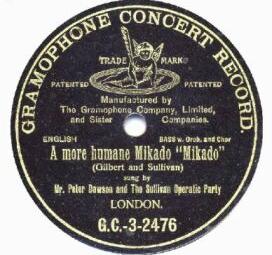
|
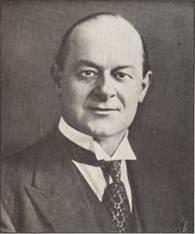
| |
| Mr. Peter Dawson's Recording of "A More Humane Mikado," from the first "complete" series of 1906, on Gramophone Concert Record G.C.-3-2476 | Peter Dawson |
Wolfson indicates that the Sullivan Operatic Party (S.O.P.), which is credited on many of the early sets, consisted of artists such as Peter Dawson, Eleanor Jones-Hudson, Ernest Pike and Stanley Kirkby, artists whom the Gramophone Company considered to record well. One is inclined, however, to consider that the S.O.P. for each set comprised the solo artists in each group. Wolfson's own definition was that "The Sullivan Operatic Party was a name used to mean whoever was in the studio that day." From the recording details listed on the individual recordings' web pages, it is evident that the four artists named above were in all of the S.O.P.'s, Dawson and Kirkby missing one each.
Bennett refers to the Savoy Opera Chorus and the Savoy Theatre Male Quartette, which recorded in 1900 and 1903 respectively. The participants are not known, but the former probably included members of the December 1900 cast appearing in Patience, such as Henry Lytton, Walter Passmore, Robert Evett, Isabel Jay, and Agnes Fraser. These two groups may have been forerunners of the Sullivan Operatic Party. On April 24, 1903 the Quartette recorded at least three single 12-inch sides, with Henry Lytton singing three selections from A Princess of Kensington. The matrix numbers are 3524b, 3525b, and 8GR-WGG.
It may interest some readers to note that the Gramophone Company had in those days singing groups called Grand Opera Party, Light Opera Party, and even Ragtime Chorus and Ragtime Quintette. It is not beyond the realm of possibility that the first two of these were comprised of the same artists as the Sullivan Operatic Party. It is well known that G&T studio artists recorded most of the operas of the period, but in English!
Note the gaps in the matrix number sequences for various dates, e.g., 16 and 21 Aug 1906, and 18 Sep 1906. Alternative takes were probably made in these sessions for the selections involved. On the other hand, it is also possible that performers other than those involved in the selections below were in the studio, and that they made recordings while other performers rested between takes.
Wolfson omits completely listings for the 1907 Gondoliers and the abridged 1908 Pinafore. Francis lists HMV B403/9 as the double-sided discs for the 1907 Yeomen, i.e., 14 sides, yet he lists two sides as being on B411. Moreover, Francis omits matrix number 9988b, as well as the last 3 sides on the set. The matrix number 6574b seems to be a misfit, since, according to Perkins, Kelly, and Ward, this particular matrix would have been recorded in Vienna in early 1905! And while Gaisberg is known to have been in Vienna in the first half of 1905, it is extremely unlikely that he could have recorded the Sullivan Operatic Party in that city at that time!
One may note further that Fred Gaisberg's brother Will recorded the very first of these sides, as well as both sets of Pinafore. Fred Gaisberg recorded the remaining G&T sides. The only set that was not reissued on double-sided discs after 1912 was the abridged 1908 Pinafore.
It must be assumed that both Fred and Will Gaisberg, as well as the other G&T recordists, assigned matrix numbers in order of their use. It is therefore interesting to note that the first nine sides of the 1907 Yeomen were actually recorded before the 1907 Gondoliers excerpts, between 1 Feb and 5 Feb 1907, while the remaining 10 sides were recorded after The Gondoliers.
HMV Acoustical Complete Sets
All of the acoustically recorded sides from July 1917 through January 1921 were recorded by either Edmund J. Pearse or William Sinkler Darby, both of whom were assigned the af doublet letter suffix. Matrix numbers of the rejected sides are shown on the respective web pages in italics, but many are unidentified. These may have been alternative takes of various sides, or, as stated elsewhere, they were not necessarily G&S selections, but may have been recordings of other selections by other artists. None of the acoustical recordings were ever issued as single-sided discs, although single-side numbers were assigned to most of the recordings before 1925.
One should also note that HMV, or His Master's Voice, was never the name of any recording company. It was solely a trademark used by the Gramophone Company, later EMI, and the Victor Talking Machine, later RCA Victor Company. It was derived from the logo of the dog Nipper listening to "His Master's Voice," which was used on the labels of both companies at one time or another. It occupied the entire upper half of G&T labels on double-sided discs, the words "HIS MASTER'S VOICE" being in an arc above the trademark.
From about mid-1912 to about mid-1921, the prefix HO was added to the triplet system for both 10- and 12-inch discs. When additional takes were required, the first matrix was usually not discarded, but simply filed, and additional plates were used for further takes. These matrices were assigned the next number in the recordist's assigned block. So in the 1917 HMV Mikado we find the matrix numbers HO2766, 2767, 2768, 2770, 2772, 2774, 2776, 2778, 2780, 2789, 2791, 2796, 2797, 2799, 2801, 2803, 2805, 2807, 2810, 2811, 2813, 2816, 2818, 2914, and 2916 all rejected. Most of these were apparently first takes, the second takes being assigned the next number. We find a similar situation in the 1919 HMV Gondoliers.
This procedure quickly used up numbers. It was not until the 1920 HMV Yeomen that the designation of takes was changed. From that time, each take of the same selection by the same performers was given the same matrix number, while the number of the take was designated by a superscript Roman numeral suffix, e.g., HO4282I. Other recording companies, as well as G&T, sometimes let the bare number designate the first take, while only later takes were identified with the suffix number.
Most of the "Recording Details" and "Recording Sessions" tables on the individual recordings' web pages indicate alternate takes by a suffix number (e.g., Cc18640-2). My sets of HMV recordings of both the 1927 Gondoliers and the 1930 Pinafore indicate all alternate takes, including the first, by Roman numeral superscripts. Such a matrix number might appear as:
Cc18640IIAT2Δ
James F. E. Dennis, editor of the British monthly magazine The Record Collector, says in a note to Perkins, Kelly, and Ward's article:
...where superscripts in small Roman capitals appear as part of the matrix number...they should be "shoulder high" and are so pressed in the disc. J.D.
G&T used this method to designate take numbers, from a superscript I to a superscript X, or higher, until almost the end of the 78rpm era. The superscript numerals and anything following them usually appear directly above a Greek delta, as Δ. Note that there are as many matrices with the same basic number as there are takes. Each take has its own matrix, but they all share the number, differing only by the numeral used to indicate the take.
I am not certain of the meaning of such letters as AT in the superscript suffix above, nor of the 2 following it. It may refer to a recording engineer, as in earlier days. More than likely, however, they refer to the number of the stamper prepared from the original matrix plate. Whatever it may mean, it does not affect our understanding and interpretation of matrix numbers of this period.
Bennett does not generally indicate different takes of any recordings, although both Bolig and Francis do, but only by hyphenated Arabic numerals. One exception is Bennett's listing of G&T 2-2662, Pol Plançon's 1902 recording of Schumann's "Les deux grenadiers," in which the matrix number is given distinctly as "1925II.G," indicating that Fred Gaisberg had supervised the recording in London sometime between April and November of 1902. Various discographers have seen fit, not only to change superscript Roman numerals to normal Arabic numbers, but also to add hyphens in various places. This may prove confusing to the untutored record collector, especially when he/she is trying to locate a pressing of a particular take, which may not exist in the form in which he/she finds it written!
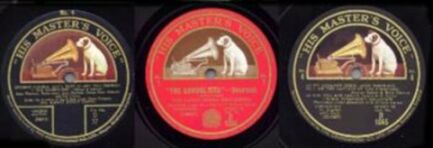 Left: HMV D 37, Side 4 from the 1919 acoustical recording of The Gondoliers. Note the three different label designs. The 22 sides in this set bear three sequences of single-side catalog numbers, listed as such in Bennett. Center: HMV D1334, Side 1 of the 1927 electrical recording of The Gondoliers. This set of discs has single-side numbers apparently assigned but never listed or issued. Right: HMV D1845, Side 4 from the 1930 electrical recording of H.M.S. Pinafore. The series of numbers to be found at the 7:30 o'clock position are apparently related to the sequence of accepted takes, assigned during the recording sessions. The series 30-xxxx is generally found on 10-inch discs, while the 32-xxxx series was used for 12-inch sides. |
Single-side numbers from 02829 to 02833 appear on 5 sides of solo selections sung by male artists, and from 04257 to 04265 on duet selections, while the numbers 04689 to 04695 are on the ensemble selections. A single number 03655 appears on the only female solo without choral accompaniment, on HMV D 40 side 2, "Kind Sir, You Cannot Have the Heart."
HMV Electrical Complete Sets
When the electrical recording era began in early 1925, the Gramophone Company was still using the Bb/Cc system of matrix numbers that had begun some five years before. This system remained in use through the end of 1930, encompassing the first eight electrical recordings of complete Gilbert & Sullivan operas. When the first three abridged sets were recorded, the Gramophone Company had begun to use the 0B/2B system mentioned in a previous section. The next two complete recordings, as well as the abridged recording of the 1933 Sorcerer, also used this system. The final recording of Gilbert and Sullivan operas by the Gramophone Company, the 1926 HMV Mikado, used the extended 0EA/2EA matrix numbering system.
On the respective web pages, the issued matrix numbers are derived from a variety of sources, including Francis, liner notes to various LP and CD re-issues, and correspondence with visitors to this website who own copies of the original discs. Wolfson gives only the overall cast lists. The cast lists on the web pages are taken directly from the labels of these sets, and from the aforementioned sources. Attempts have been made on the individual web pages to reconstruct the recording sessions for each set wherever this is possible and rational. If the issued take is II or even higher, then we know that takes were made prior to the issued one.
For most of the sets, recording dates come from Francis. Some dozen or more discrepancies in the recording dates of the HMV electrical recordings are evident. Francis gives all recording dates in the form of ddmmyy, with the month in lower case Roman numerals between the day and the year. Thus the recording date for "Our Great Mikado" is given as 19ix26, indicating September 19, 1926. The matrix number Cc9462 indicates that it was recorded most probably on November 19, 1926, indicating a transposition of the i and x by Francis. The date of 29 September 1926 for the matrix Cc9495IA appears to be an impossibility, since this would place it among the first matrix numbers of this recorded series. The date 29 November 1926 appears to be more likely, again pointing to the same transposition. These and other discrepancies are presented in the notes to the individual recordings' web pages. Except where the correction is obvious, these dates must remain unresolved until someone can refer to the original recording sheets.
The original matrix numbers on Victor repressings of the HMV electric recordings all are overstamped with the V.E. in a circle near or over the numbers. In addition to the matrix numbers, the Victor pressings provide record numbers on both the disc and the label, as well as what are probably the numbers assigned to the duplicate masters or stampers. The manual couplings bear only two numbers beside the matrix number, both on the record itself and on the label. The identity and significance of the second numbers, which are in sequence in each set, is unknown to me. The drop automatic side couplings (DC albums) have a third number added to both the disc and the label, which is the record number of the side in the manual sequence. Altogether, quite a jumble and clutter. The record numbers for the Victor issues are given in the various "Issue History" tables for each of these recordings.
Sets on Other Labels
The four Columbia abridged sets and the three RCA Victor sets belong in any G&S discography, although none of them involved the D'Oyly Carte Opera Company in any way (see, however, the 1930 Columbia abridged sets). But then, neither did most of the "sets" before 1922, with the occasional exception. Some of the artists, however, achieved standards of performance that equaled or exceeded those of their D'Oyly Carte brethren. Note that the short-lived long-playing 78rpm discs of RCA Victor had no matrix numbers. This secrecy on the part of the Victor Company has been noted and deplored by discographers for many years! I refer the reader to the various web pages for further discussion of their relative merits and deficiencies. (See the Civic Light Opera Company of New York City Mikado and Pinafore, as well as comments on Victor's Long-Playing Record format under the 1930 D'Oyly Carte Pinafore.)
The 1930 Columbia Mikado recording was the first in which the sides were recorded in order, followed by the 1931 Columbia Yeomen and 1931 Columbia Iolanthe sets. These are the only 78 sets recorded in this manner before the Decca/London releases. It was customary in the early years to record those selections to be sung by the artists on hand at any given session, since most of them had other obligations.
The last group of G&S sets on 78rpm matrices encompassed the first seven of the 1949/51 Decca/London recordings. The matrix numbers in this group are all quite straightforward. All seven sets were transferred shortly thereafter to the recently developed long-playing (LP) records, and they marked the end of the 78rpm recordings of Gilbert & Sullivan.
The LP Era
Matrix numbers continued to be used on LPs and even CDs, but they have special significance for 78's, as they are the only sure way of identifying a particular performance. Editing was essentially impossible in those days, and a side had to be recorded intact. The matrix number was stamped onto the master disc when the recording was made and was retained on copies of the master disc.
The seven operas Decca/London recorded in 1949-50 (the mono sets with Martyn Green et al) were originally issued on 78rpm records. However, Decca was by now using a different system, and the sequence of matrix numbers no longer signified the order in which the items were recorded.
In the Summary of Recording Histories table, the matrix numbers for the 1949 Decca/London recording of H.M.S. Pinafore appear with either 1 or 1A suffixes. This is found in Francis, but the significance is unknown. None of the other 78rpm recordings in this series has such suffixes.
My copies of London LL 71/2, the 1949 Decca Pinafore, have matrix numbers ARL 42-1ZE, ARL 43-1ZE, ARL 44-4ZE, and ARL 45-1ZE. The original Decca LP discs, LK4002/3, have the same ARL numbers, but with different suffixes. Moreover, the Decca numbers are stamped on, whereas the London matrix numbers are obviously inscribed by hand. The London and Decca labels, as well as the Richmond labels described below, have the ARL numbers printed on them without any prefixes.
The reissue of the 1949 Trial recording on Richmond R.23050 carries the matrix numbers ARL-34-2NR and ARL-35-1NR. The numbers on the original Decca LK4001 pressing are ARL-34-3B and ARL-35-3A. The various other Decca and London pressings have similar matrix numbers, but with different suffixes. The reason for this is unknown, unless it was to indicate different copies from the master matrix. But why three of the London LL71/2 sides have the suffix -1ZE, and the other has -4ZE, is unexplained.
We said above that Victor was generally secretive about their (or G&T's?) matrix numbers and frequently burnished them off the matrices that they pressed. On the LP reprint of the 1927 Trial and 1930 Pinafore, issued on RCA LCT 6008, the 4 sides have very faint matrix numbers of E2RP-4319-1S through E2RP-4322-1S. These sides also appear to have several capital letters (initials?) stamped opposite the matrix numbers. If these are the initials of the engineers who prepared the LP matrices from the original 78s, then we seem to be back where we started. The recording engineer's initials are once again stamped onto the matrix!
Uses and Applications of Matrix Numbers
The number stamped onto the matrix, in whatever format was current and in vogue at the time, provides identification of various aspects of the recording itself. The bare number identifies the selection and the various performers involved. These were usually (and hopefully!) recorded in the notebooks or on the recording sheets of the company's recording studios. Much of the information above and elsewhere has been extracted from these notebooks. Unfortunately, many of them, particularly the early ones, were lost, destroyed, or mislaid.
The matrix number was usually entered in a notebook under a date, indicating when at least the first take of a selection had been recorded. It was customary in the early days to record not more than two or three takes of the same selection in a given recording session, although there appear to have been numerous exceptions (see the consolidated index of Early G&T, HMV Acoustical, and HMV Electrical recording sessions). If further takes were required, they were made on later dates, also two or three at a time. Thus, a take 9 or 12 might have been made at the fifth or sixth session, and these could have been weeks, months, or, as we shall see, as much as 4 years apart. Unless the notebooks are available, then, the dates of some published takes are often difficult if not impossible to establish.
In the first two decades of the last century it was thought important, or at least worthwhile, to identify the recordist or recording engineer, the individual in charge of the actual recording process. The reason for this may have been that he was paid according to the number of recordings made by him. The means used for this identification are explained above. After about 1925, with the advent of electric recording, this information was deemed superfluous, as indeed it was, since it contributed little if anything to the identification of a given performance. But at the time it did identify who supervised the recording, and generally where it had been recorded.
Another application of matrix numbers is to fit those of unknown date into their proper time frame. For example, if a matrix with the number 1234 is known to have been recorded on December 1, 1900, and another with the number 1256 was recorded on February 15, 1901, then at least the first take of any discs having numbers between these two can be assumed to have been recorded in the period bounded by those two dates. If one can establish that the unknown matrix number was indeed the first take, then one can affirm the approximate date of the recording. Dates for later takes are not easily established in this manner.
The biographical data of the performer(s) and the recordist can help establish dates for matrices of unknown or uncertain history. This technique works, for example, if an artist or recordist was in a certain city on a certain date, and if the artist has a recording that may have been made on that date, or the recordist can be identified by his suffix. If, on the other hand, the artist or recordist was not in that place at the time of that particular recording session, then the matrix could not have been prepared on that date.
Despite cavalier usage in some sources, Arabic and Roman numerals in matrix numbers are not interchangeable. The reason for this is a simple one: they each have their own significance. G&T used Roman numeral superscripts to identify take numbers. Victor, on the other hand, often used an Arabic numeral as the take number, and placed it on the matrix to the left of the label area. Columbia seems always to have used a hyphenated numeral suffix to indicate the take. See also the comment above by James F. E. Dennis.
Most record collectors content themselves with acquiring a particular performance of a particular selection by a particular performer, according to the record number. If an artist is known to have recorded the same selection more than once, it is a relatively simple matter to find the record numbers for the different performances and collect them accordingly. Thus, the great pianist Alfred Cortot recorded most of the works of Frédéric Chopin two, even three, times between 1919 and 1948. Each recording was issued under a different matrix number as well as a different record number. It is therefore quite easy to identify and collect them.
On the other hand, different takes, i.e., performances, of the same selection by the same artists were occasionally issued under the same record number. Sometimes, an entirely different performance of the same selection by another artist, and with a different matrix number, was issued at a later date under the same record number. This writer has two complete sets of the 1919 G&T Gondoliers set on G&T D 36/46. Both sets have the matrix numbers given in the "Recording Sessions" table in this discography, except that Side 12 in one set was pressed from matrix number HO3880af, while the other Side 12 was from matrix number HO4550AF. In both instances the labels designate the same artists — John Harrison, George Baker, Edna Thornton, Bessie Jones and chorus — even though Derek Oldham apparently replaced John Harrison on the later take.
Regarding the specific use above of the suffixes "af" and "AF", the latter occurs only in matrix numbers assigned during the recording of the 1920 G&T Yeomen. However, since several sides for the 1920 G&T Pirates, as well as the retake for the 1919 G&T Gondoliers, were recorded at the October 4, 1920 session, they also have the "AF" suffix. The only explanation I can see for this is that assistants to the recordist in charge (Pearse or Darby) picked up the dies for capital, rather than lower case letters, before stamping the master copies of the matrices. The error is all the more understandable, since he would have had to select reverse dies. This usage occurred in sessions between March 4 and October 4, 1920. It is of interest that the three sessions in July 1920 and that in August used the lower case dies.
Neither Francis nor Wolfson mentions the second take on matrix HO4550AF, nor the even later take of Tudor Davies on matrix Cc2690III of "Take A Pair of Sparkling Eyes" from March 12, 1923. The labels from both Sides 12 provide the identical record number for the corresponding single-side disc, viz., HMV 04693. Bennett lists neither of these recordings. But then, Bennett lists only HMV 02829, 02830, 02831, and 02833 out of the 22 sides, omitting all of the 04000 series. We are probably fortunate that John Harrison's poor voice is heard in only two solo selections in this recording, and that both of these were later re-recorded.
It should be noted that the photographs in the liner notes for Lockwood's transfers of the 1920 G&T Yeomen of The Guard all show the matrix numbers with "AF" suffixes.
Conclusion
Matrix numbers are of relatively little interest to the record collector, unless he or she happens to be interested in discography as well. But even the record collector should be aware of such things as alternate takes, re-recordings, and the like. I have tried to point out the usefulness and applications of matrix numbers to the G&S discographer/collector, particularly as they are presented in the various "Recording Details" and "Recording Sessions" tables.
The only G&S recordings which present any real difficulty in the interpretation of matrix numbers are those of the Gramophone Company and its successors (see above). I have tried to sort this problem out insofar as it is applicable to the G&S recordings, plus a little more!
Whenever one finds information such as presented below in the bibliographic sources, one should recognize that much of the material is out of date almost as soon as one is finished reading, and hopefully more data are out there for the looking and the taking. I cannot emphasize too strongly that what one actually sees is what one should report. From various sources, e.g., books, articles, liner notes from LP records and compact discs, one should be well aware that many unfortunate liberties have been taken over the decades, only to be compounded elsewhere. Thus, HO matrix numbers have been presented as Ho numbers, and even as the suffix rather than the prefix. This applies also to the triplet system described above. The worst examples I have seen are matrix numbers in the form of "ac123HO"!
The function of the discographer is to determine who, what, where, when, and how each side was made, whether it is a cylinder, 78rpm shellac disc, long-playing vinyl disc, or digitally recorded compact disc. Matrix numbers for the latter are particularly difficult to identify!
Bibliography
Bennett, John Reginald. Voices of The Past. Vol.1. A Catalogue of Vocal Recordings from the English Catalogues, 1898-1925. Oakwood Press, 1956. (1978 Greenwood Press reprint.) ISBN 0-313-20237-0.
Bennett, John Reginald. Voices of The Past. Vol. 2. A Catalogue of Vocal Recordings from the Italian Catalogues, 1898-1925. Oakwood Press, 1957.
Bennett, John Reginald. Voices of The Past. Vol. 3. Vocal Recordings 1898-1925. Supplement to "Dischi Fonotipia." Oakwood Press, 1957.
Bolig, John Richard. The Recordings of Enrico Caruso, A Discography. Published by the Eldridge Reeves Johnson Memorial Delaware State Museum, Dover, Delaware, 1973.
Brooks, Tim, and Brian Rust. The Columbia Master Book Discography, Volumes I, II, III and IV. Westport, CT: Greenwood Press, 1999. ISBN: 0-313-29217-5 (entire set)
Chew, V. K. Talking Machines 1877-1914. Her Majesty's Stationery Office, London, 1967. SBN 11 290162 X.
Clough, Francis F., and G. J. Cuming. The World's Encyclopædia of Recorded Music, 1966. Sedgwick and Jackson, London. (Greenwood Press, Publishers, Westport, Connecticut 1975 reprint.) ISBN 0-8371-3003-4
Fagan, Ted, and William Moran. The Encyclopedic Discography of Victor Recordings: Pre-Matrix Series. Westport, CT: Greenwood Press, 1983. ISBN 0-313-23003-X.
Fagan, Ted, and William Moran. The Encyclopedic Discography of Victor Recordings: Matrix Series: 1 through 4999. Westport, CT: Greenwood Press, 1986. ISBN 0-313-25320-X.
Francis, John W. N. "The Gilbert and Sullivan Operettas on 78s." ARSC Journal, Volume 20, No. 1 (1988-1989).
Gelatt, Roland. The Fabulous Phonograph 1877-1977. MacMillan Publishing Co., Inc., New York, 1977. ISBN 0-02-542960-4.
Koenigsberg, Allen. The Patent History of the Phonograph, 1877-1912. Revised edition. Brooklyn, NY: privately printed by the author, 1991. ISBN 0-937612-13-8.
Moore, Jerrold Northrop. A Matter of Records: Fred Gaisberg and the Golden Era of the Gramophone. Taplinger Publishing Company, New York, 1977.
Moses, Julian Morton. Collector's Guide to American Recordings 1895-1925. Dover Publications, Copyright 1949 by the American Record Collectors' Exchange.
Perkins, John, F., Alan Kelly, and John Ward. "On Gramophone Company Matrix Numbers 1898 to 1921." Published in The Record Collector, Ipswich, Suffolk, England, Vol. XXIII, Nos. 3 & 4, May, 1976.
Read, Oliver, and Walter L. Welch. From Tin Foil To Stereo. Howard W. Sams & Co, Inc., Indianapolis, 1976. ISBN 0-672-21206-4
Smith, Michael, compiler. The Gramophone Company Ltd His Master's Voice Black Label 12 & 10-inch "D" & "E" 78 rpm Series. Witley Press, Hunstanton, England.
Sutton, Allan, and Kurt Nauck. American Record Labels and Companies, An Encyclopedia (1891-1943). Mainspring Press, Colorado, 2000.
Wolfson, John. The Savoyards on Record. Packard Publishing Limited, Chichester, England, 1985.
